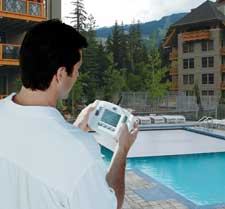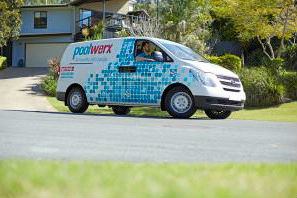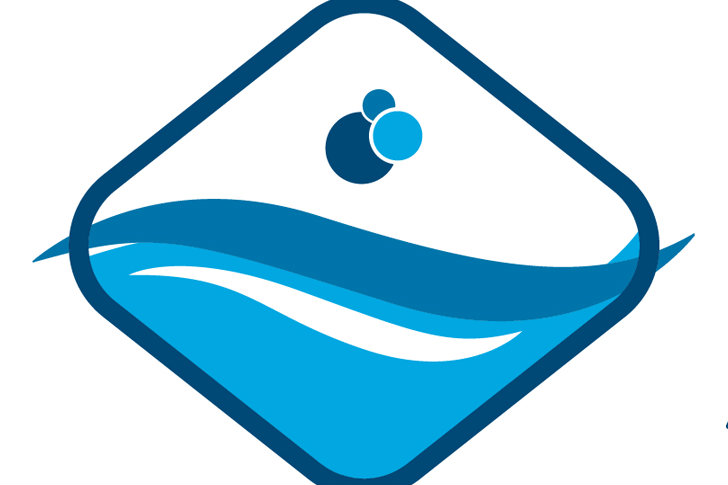When Ray Whitford saw how impressed his customers were with the spectrum of automation products on the market, he decided to take a different approach to sales.
“The technique that’s worked for us is to present the big picture,” says the president of Lifetime Pools Inc., a Pool & Spa News Top Builder in Palo Alto, Calif. “It’s not just this control or that automatic cleaner — it’s a holistic view of automation.
“We’re not only able to enhance the circulation process and clean the water, but we’re giving them a way to enhance the total environment by tying that into the controls,” Whitford adds.
In today’s pool and spa market, automation is the name of the game. Here’s how five trends are affecting the industry.
1. The market has doubled in the past three years.
Manufacturers say between 60 percent and 75 percent of new pools utilize some form of automation beyond a basic time clock or sanitation system. “Five years ago, approximately one in five pools had automation; now four in five have it,” says Dave Button, national sales manager of Chemtrol, a Santa Barbara, Calif.-based maker of water-treatment systems.
Officials at Hayward Pool Products Inc. and Jandy say that growth in the existing automation market has averaged 12 percent to 15 percent annually the past three years, causing the overall sector to more than double. Pentair Water Pool and Spa adds that the automation market grew 30 percent in 2006 alone.
Builders such as Whitford say the figures are substantial, especially considering that many markets nationwide saw pool and spa sales drop significantly last year.
2. Savvy consumers are demanding sophisticated pools.
Much of the growth is driven by today’s pool owner. “Automation [and] controls on residential pools have transformed from a ‘nice to have’ to a ‘must have’ accessory,” says David MacCallum, automation and lights product manager at Pentair Water Pool and Spa, based in Sanford, N.C.
“We can pay bills with our Blackberries, so why not remotely control or troubleshoot our pool equipment with our cell phones and laptops?” he asks.
Kris Petersen agrees. “People have more exposure to cell phones, iPods, TiVo and digital cameras,” says the director of product management at North Kingstown, R.I.-based Goldline Controls. “Newer technologies are more mainstream, [so] people are much more comfortable with automation.”
Builders see the demand firsthand. At California Pools & Spas, nearly 65 percent of the installations are automated. “Our customers are latching onto being able to do things at their fingertips,” says Vanz Steimle, vice president of procurement and distribution for the West Covina, Calif.-based Pool & Spa News Top Builder. “They realize that their time is worth a lot to them.
“The reality is that our society is built upon technology,” he adds.
3. Entry-level customers have more options.
In the past three to five years, manufacturers have emerged with products that specifically target the standard pool. As automation becomes “the norm,” models servicing the basic pool are sold alongside complex systems.
“The low-end customers also have high-end expectations,” says Steimle of California Pools & Spas. “They want the same capabilities high-end customers have.”
The shift is happening thanks to the availability of quality electronics and components at reasonable prices. “As the costs come down, we are able to offer functionality for more customers who may have been limited by their budgets just a few years ago,” MacCallum says.
The expansion into a diversified market has other implications. In the past, high-end concrete pool owners were the only consumers who could splurge on wireless control systems or robotic cleaners. Now installers of vinyl and fiberglass pools can offer similar amenities to their clients.
4. Automation is now the driving force behind pool sales.
Builders increasingly recognize the power of automation products in the sales process. They are taking the holistic approach advocated by Whitford of Lifetime Pools.
“Ten years ago, customers would say that they heard this pump gives more gpm than that pump,” Steimle says. “Today, our customers don’t want [technical] semantics. They are more interested in the brains of the pool, not the skeleton.”
David Burton feels the same way. “Companies are selling products today more by the ‘wow’ factor ,” says the CEO of Burton Pools & Spas, a Pool & Spa News Top Builder in Fort Smith, Ark. “Home-improvement shows such as [those on] HGTV are playing a big part in that, too.”
This is the beginning of a revolution, David Nibler believes. The growth of technology has surpassed any other industry development, and it should be highlighted for consumers.
“The days of having a time clock and a toggle light switch are gone,” says Nibler, who is vice president of marketing and business development at Jandy in Petaluma, Calif.
5. More and more builders recognize the benefits of technology.
For builders, one of the greatest challenges of selling automation is keeping up with the technology. Thanks to the Internet, consumers now are well-equipped with information on cutting-edge products.
“Pool builders have to be on top of their game,” says Steimle, who organizes an annual vendor fair for his company, where store managers can peruse new products. “You can always fall behind.”
With so many options in the marketplace, the main questions builders ask about new products are: “Will this be a profitable product?” “Will this differentiate my company?” and “Will the technology and post-installation maintenance be a hassle?”
In the covers market, these issues play a big role. “Some builders were initially reluctant to offer covers because of price considerations,” says Lanny Smith, president of Coverstar Inc., a Lindon, Utah, manufacturer. “[They become] avid cover buyers in the following years because of the ability to differentiate their pools from other builders.”



